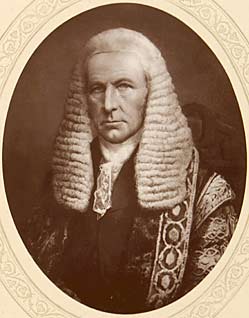Top Qs
Timeline
Chat
Perspective
Speaker Denison's rule
Parliamentary procedure rule From Wikipedia, the free encyclopedia
Remove ads
Speaker Denison's rule is a constitutional convention established by John Evelyn Denison, who was Speaker of the British House of Commons from 1857 to 1872, regarding how the Speaker decides on their casting vote in the event of a tie in the number of votes cast in a division.

In 1867, when a tie arose on a motion on Fellowships at Trinity College, Dublin, Denison gave his casting vote against the motion, declaring that any decision must be approved by the majority. The rule as subsequently adopted is that the Speaker, in any division upon a bill, should vote to leave a bill in its existing form.[1]
The principle is always to vote in favour of further debate, or, where it has been previously decided to have no further debate or in some specific instances, to vote in favour of the status quo.[2][3] Thus, the Speaker will vote:
- against the final reading of a bill (and against holding such readings immediately rather than in the future, to allow for time to consider the matter)
- in favour of earlier readings of bills (and in favour of holding such readings immediately rather than in the future, to allow for further debate)
- against amendments to bills
- against motions of no confidence
- in favour of disagreeing with amendments made by the House of Lords
The thinking behind the rule is that change should only occur if an actual majority vote is in favour of the change.
Speaker Denison's rule is now a guiding principle in many other bodies that have neutral chairpersons.[4]
Remove ads
Tied votes in the British House of Commons
Summarize
Perspective
In the case of a Committee of the Whole House, the presiding officer is the Chairman of Ways and Means or a Deputy Chairman. In other cases of plenary session, the presiding officer is the Speaker or a Deputy Speaker. Votes of smaller Commons committees are not listed.
Remove ads
Tied votes elsewhere
The Speaker of the House of Commons of Canada in 2005, Peter Milliken, broke a tie on a confidence motion to pass the 2005 Canadian federal budget; this is the first and only time a tie on a confidence motion has occurred in Canada. Milliken cited parliamentary precedent while explaining his decision.[36]
Notes
- A motion to give in reading in six or three months was a legal fiction tantamount to refusing to give it a reading at all.
- The immediately subsequent motion "That the bill do now pass" was defeated;[7] the changes proposed by the 1864 bill were effected by the Universities Tests Act 1871.
- There was believed to be a tied vote on an amendment to the motion, but it was quickly discovered that one extra "Aye" vote had been erroneously counted.[30] Prior to the counting error having been noted, the Speaker did give a casting vote of "No",[31] although this was later expunged when the error became clear.[1]
References
External links
Wikiwand - on
Seamless Wikipedia browsing. On steroids.
Remove ads
